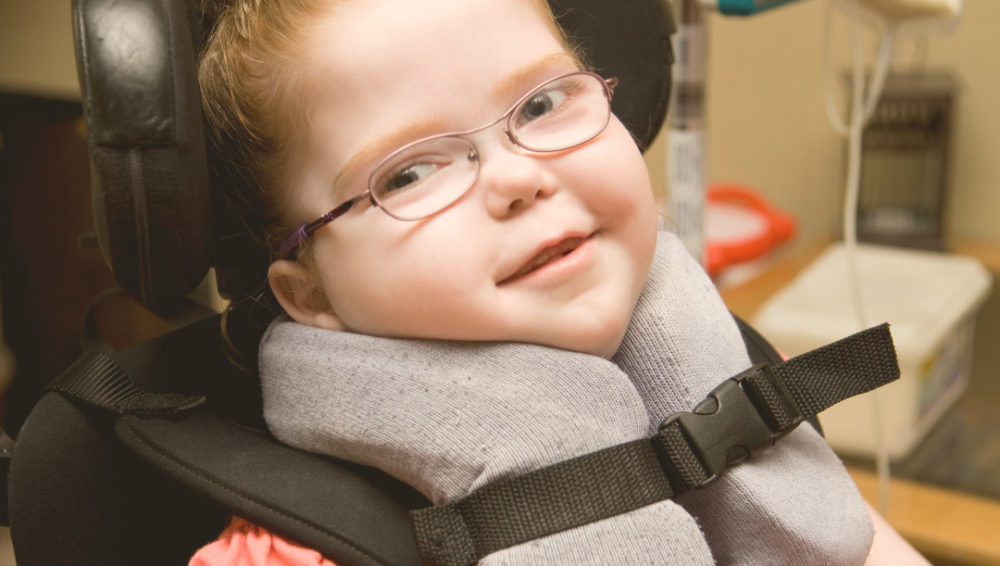Understanding Cerebral Palsy
THAI StemLife informs

Cerebral palsy is a lifelong disorder and is known to have no cure. It affects around 1 in 500 newborns. But with advanced stem cell technology, there’s now a hopeful treatment that offers permanent improvements.
What is cerebral palsy?
Cerebral palsy (CP) is a condition that affects young children, causing disorderly development of movement and posture. It can lead to lifelong disabilities and activity limitations. This disorder occurs in 1 in every 500 live births and can be caused damage that occurs to the immature, developing brain, typically before birth.
Signs and symptoms of cerebral palsy
Cerebral Palsy symptoms typically become noticeable in early childhood, during infancy, or during preschool years. This condition causes motor impairments such as exaggerated reflexes, spastic or floppy limbs, trunk movements, unusual posture, uncontrollable movements, unsteady walking, or a combination of these symptoms. Individuals with Cerebral Palsy may also experience epilepsy, blindness, or deafness.
Early signs
The key indicator of cerebral palsy in a child is a delay in reaching motor development milestones. Other potential signs of CP include:
In babies younger than 6 months old
- The baby’s head lags when picked up while lying on the back
- The baby’s body feels stiff or floppy
- When held cradled in their parent’s arms, the baby constantly acts like they’re pushing away
- When picked up, the legs get stiff and crossed
In babies older than 6 months old
- The baby doesn’t roll over in either direction
- The baby cannot bring the hands together
- The baby has difficulty bringing hands to mouth
- The baby reaches out with only one hand while keeping the other fisted
In babies younger than 10 months old
- The baby crawls in a lopsided manner
- The baby scoots around on their buttocks or hops on the knees but does not crawl on all fours
It’s important to remember that some children without CP may also exhibit some of these symptoms.
Treatments for cerebral palsy
To date, no cure is available for CP, and current treatments are targeted at maintaining the function, relieving contractures, improving nutrition, and providing supportive care and family counseling.
However, there is a lot of research on the use of stem cells for treatment. In 2011, THAI StemLife showed encouraging results on the use of autologous umbilical cord blood stem cells to treat CP. A double-blind, placebo-controlled, crossover study showed that the treatment seemed to improve motor function in experimental systems by sending signals to nearby brain cells. Children that received the highest numbers of autologous (the child’s own) cord blood displayed the highest changes in brain cell connection and motor function improvement.
Many studies have followed over the 12 years after THAI StemLife’s seminal publication, and the body of evidence suggests that cord blood cell therapy for cerebral palsy in an autologous setting is feasible, effective, and safe.
The application of stem cells to treat CP
Presently, matched sibling cord blood cell infusion for children with CP is being evaluated, and it appears relatively safe and shows promising results. This means that the previously untreatable conditions may now be amenable through a simple act of collecting the cord blood and perinatal tissues at birth with THAI StemLife. The private stem cell bank is one of the leaders in autologous cord blood research and the first in the world for cord blood and G-CSF use in cerebral palsy.
A case study from Bangkok, Thailand
A mother in Bangkok noticed her son’s delay in motor skill development and sought help from doctors. It took the doctors eight months before they could conclude that the problem was caused by cerebral palsy, as the condition can vary greatly from one case to the other.
Following the diagnosis, the parents tried to learn what they could about cerebral palsy, and in the process, they came across another boy in Bangkok who had a similar condition and was given stem cell treatment, with a positive result. Luckily, the index child’s parents had saved his cord blood at birth with THAI StemLife.
The whole treatment process took 10 days, while the administration of the cord blood itself only took 10 minutes. 30 ml. of cord blood was sent into the boy’s veins through a drip. After 1 week, the parents were impressed by the result. The boy looked more alert and interested in his surroundings. He speaks clearly and no longer needs his corrective shoes.
What could have been a lifelong condition for the boy was miraculously ameliorated by his parents’ one attempt to insure his future health — saving his cord blood stem cells.
Read the full story here.
Mali’s trusted partner
THAI StemLife is the first and largest stem cell bank in Thailand and also the only one with real-life-saving cases. They are the only provider in Thailand that operates 24/7 for traumatic brain injury emergencies.



